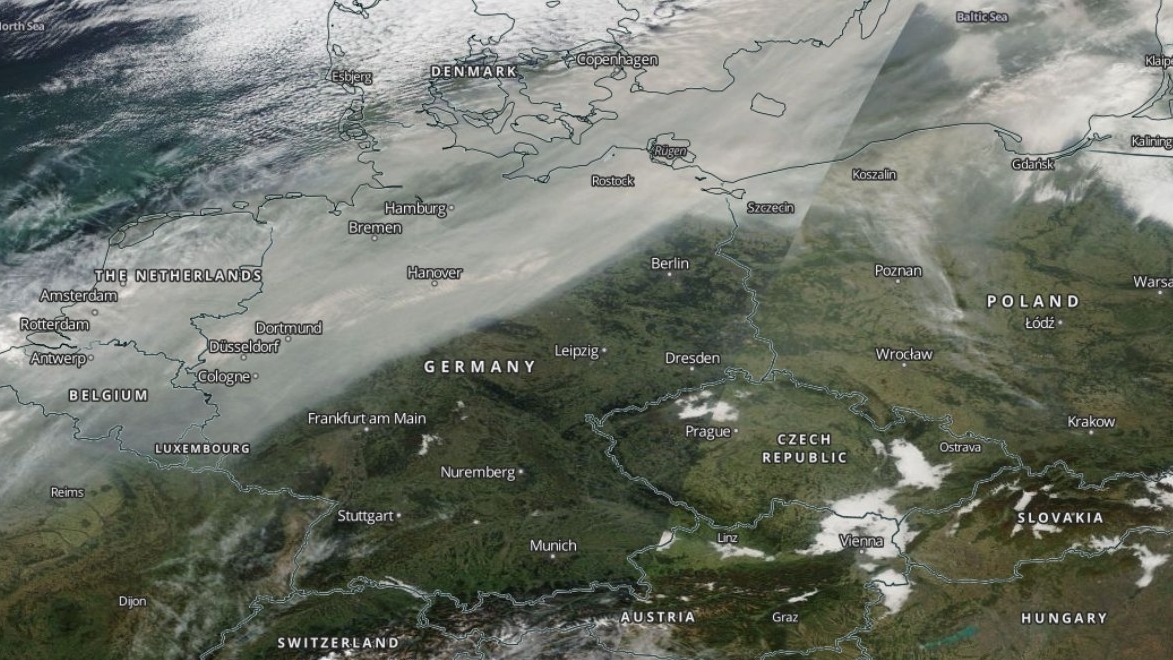High up in the atmosphere, tiny particles lead to the formation of clouds. If air currents carry Saharan sand to Europe, this also has an effect on our weather. In the PermaStrom research project, a team of researchers from the Karlsruhe Institute of Technology (KIT), together with the German Weather Service (DWD) and the solar energy service provider meteocontrol, is investigating how such events can be better taken into account in weather forecasts. The findings should help to produce more accurate yield forecasts for photovoltaic systems. The Federal Ministry for Economic Affairs and Energy is funding the project with 2.5 million euros.
A weather forecast that is as accurate as possible not only helps to plan weekend excursions, it is also crucial for the management of electricity grids. This is because yield forecasts for photovoltaic systems are based on the prediction of solar radiation.
However, large-scale forest fires or the episodic transport of Saharan dust to Europe can lead to significant errors in solar radiation forecasts on individual days. Ashes, dust and grains of sand release tiny particles into the atmosphere, which contribute to cloud formation. If the photovoltaic yield forecasts are wrong, the missing energy must be provided elsewhere in the short term.
Scientists from KIT and the DWD, together with the solar energy service provider meteocontrol GmbH, are investigating how atmospheric aerosol particles affect clouds and solar irradiation in the project "Photovoltaic yield forecasting for better management of the influence of atmospheric aerosol on power grids in Germany and Europe" (PermaStrom). The main aim of the project is to better take these effects into account in the weather forecast and the photovoltaic yield forecast based on it. So far, this has not been the case at all or only insufficiently.
"We use measurement data from weather stations as well as satellite data for our investigations," says Bernhard Vogel, head of the "Trace Substance Modeling and Climate Processes" group at the Institute of Meteorology and Climate Research - Tropospheric Research at KIT. This data is processed in an extended numerical weather prediction system, which is operated by the DWD specifically for this application.
In the previous PerduS project, the transport of Saharan dust to Germany was already investigated and the forecasts in this regard improved. However, according to the experts, this is not enough. It is necessary to consider other types of aerosol, such as soot and dust caused by forest fires, as well as to model and predict the effect of these aerosol particles on cloud formation. "The latter in particular is still a challenge, as the processes in clouds and their interaction with aerosol particles are not yet fully understood," says Axel Seifert from DWD.
By combining observational data and improved, physics-based modeling with the ICON-ART model system, the scientists hope to make progress in understanding these relationships and improve daily weather forecasts. This could also clarify whether clouds are actually different during a Saharan dust event and, if so, whether this difference can be attributed to the aerosol particles themselves.
Bridge between research and application in the electricity grid
As part of PermaStrom, meteocontrol GmbH is further developing the forecasting system, taking grid operator requirements into account. "This means that the research results can be used by electricity grid operators in the form of new forecasting models in the future," says meteocontrol GmbH. The solar energy service provider is a developer and supplier of professional monitoring and control systems for PV systems and portfolios. The company also produces solar power forecasts and energy and weather data analyses.
In order to ensure that the users of the new forecasts, which are specially optimized for energy meteorology, are involved in the development at an early stage, the project is being accompanied and supported by the associated partners Amprion, 50Hertz and EnBW.





